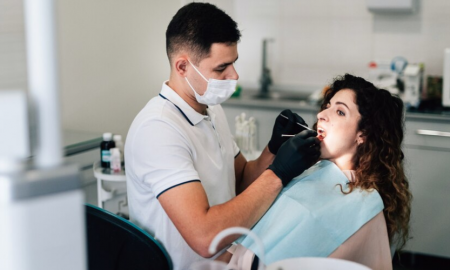
Why Women Face Higher Out-of-Pocket Health Expenses

In healthcare, disparities persist, and a recent report from Deloitte underscores a significant financial gap between working women and men in the United States. Even after excluding maternity care costs, women are shouldering a notably higher burden when it comes to out-of-pocket healthcare expenses.
This revelation affects their finances and could potentially impact their overall well-being. In this article, we delve into the details of this eye-opening study, exploring the reasons behind the gender disparity and potential solutions.

Elevate Digital/ Pexels | Working women in the U.S. spend an average of $266 more per year out of pocket on health care costs
The Financial Strain on Working Women
The Deloitte report reveals a startling truth: working women in the U.S. spend, on average, $266 more annually on out-of-pocket healthcare costs compared to their male counterparts. This gender-driven imbalance accumulates to a staggering $15.4 billion in additional expenses for women collectively.
Beyond Maternity Care
Surprisingly, the gender healthcare cost divide persists even when maternity expenses are excluded. Women between the ages of 19 and 64 continue to spend more on healthcare compared to men within the same age group. This finding sheds light on the broader healthcare inequalities that women face, extending far beyond pregnancy-related expenses.
Kulleni Gebreyes, the Chief Health Equity Officer at Deloitte, emphasizes the repercussions of this financial burden, stating, “Our analysis highlights a hidden financial burden on women that can impact not only their pocketbook but potentially their health.
Financial stressors can lead to health problems and delays in care, further perpetuating a cycle of preventable healthcare consumption, thus compounding expenses. As leaders in business, healthcare, and society, we have an opportunity to make intentional efforts to close this gap.”
The Complex Nature of Healthcare Costs
While it is true that employers are required to offer healthcare coverage to men and women at equal rates, it is crucial to understand that healthcare expenses encompass more than just premiums. The Deloitte report delves deeper into the issue, suggesting that employers could bridge the gender gap by increasing benefits for women by an additional $12 per month.
Andy Davis, Principal of the Healthcare Practice at Deloitte, highlights the necessity of addressing this issue: “Our healthcare system has done a great job driving equity for access, from the ACA making pregnancy an essential health benefit to rules around mental health parity.
Equity in benefits is the next challenge because benefits should be designed to support every person. Women’s care needs are different than men’s, and healthcare insurers and employers have an opportunity to examine and redesign benefit coverage to reduce the financial burden on women, close the benefits gap, and advance health and well-being for everyone.”
The Gender Gap in Coverage
In 2022, KFF (Kaiser Family Foundation) released findings indicating that women were more likely to experience healthcare coverage gaps than men. These gaps seriously affect women’s access to necessary care and medication.
According to the report, 31% of women reported that their healthcare plans did not cover services they believed were included, compared to 26% of men. Moreover, 29% of women expressed concerns that their plans would not cover prescription medication, starkly contrasting to the 21% of men who shared the same worry.
More in Financial Advice
-
`
Shifting Gears: Successfully Transitioning Your Client Base Across Industries
Ever feel that entrepreneurial itch to push your boundaries and explore new horizons? Perhaps you started with a laser focus on...
March 16, 2024 -
`
Music Icon Dolly Parton Reveals Secrets to Her $440 Million Fortune
Beloved country music legend Dolly Parton has long been an enigma wrapped in a rhinestone-studded enigma. At almost 80 years of age,...
March 9, 2024 -
`
Scaling Up Your Small Business: A Tightrope Walk With a Winning Plan
Building a thriving small business is like nurturing a seedling. You pour your heart and soul into its growth, watching it...
February 27, 2024 -
`
Is SZA All Set to Launch the Next Big Celebrity Makeup Line?
Today, celebrities launching their makeup lines have become as much of a trend as their next hit single. Among the glittering...
February 19, 2024 -
`
Healthy Lifestyle Habits for Ageless Aging
Be a Continuous Learner The pursuit of knowledge is the wind beneath the wings of our minds, keeping us aloft above...
February 16, 2024 -
`
Unlocking Financial Freedom: Your Roadmap to Building Business Credit
Embarking on the journey of entrepreneurship is exhilarating yet challenging. Among the myriad of tasks that come with starting and growing...
February 7, 2024 -
`
Envisioning the Future: The Shape of a Labour-Led UK Government
The wind whispers through the bustling pubs of Manchester, carrying murmurs of discontent. In the dimly lit corners, pints clink against...
January 31, 2024 -
`
What Are The Key Financial Dates to Keep an Eye on in 2024?
January 31: Deadline for Tax Returns Start the year on the right foot by ensuring your tax returns are filed by...
January 26, 2024 -
`
The Ultimate Rotisserie Chicken Showdown: A Battle of Flavors and Bargains
Prepare your taste buds for a flavor-packed journey as we dive into the delectable realm of rotisserie chickens. These savory wonders...
January 15, 2024

















You must be logged in to post a comment Login